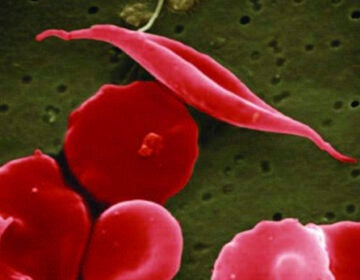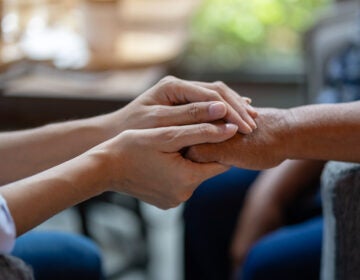Healing the wounds from injecting drugs
Injecting drugs can cause serious, life-threatening wounds. As the drug crisis escalates, some clinics are teaching simple techniques to reduce the risk of infection.
Listen 9:51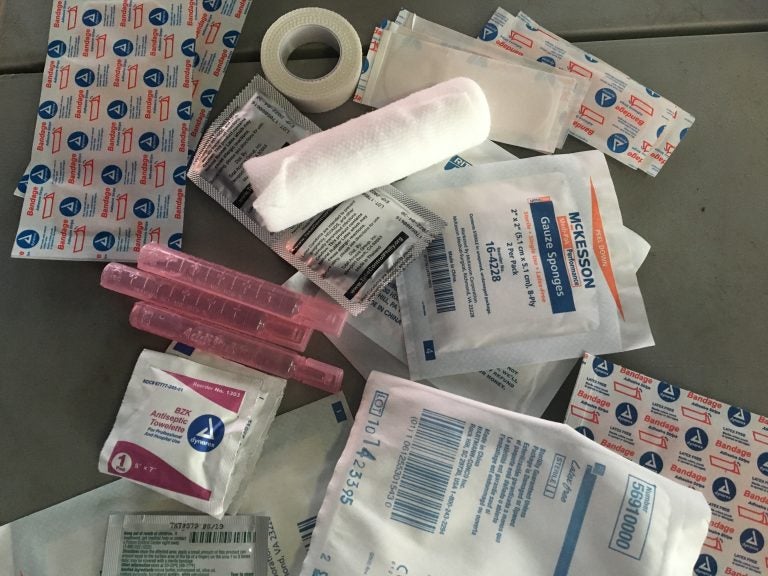
A spread of ointments, gauze, sterile water and other items stocked inside Prevention Point Philadelphia’s mobile wound care unit. (Elana Gordon / WHYY)
Laura Bamford emerges from the exam room after spending about an hour with a regular patient. He’s smiling, and she’s beaming. Actually, Bamford looks relieved. She just drained the patient’s abscess.
“The abscess is full of fluid, so once you relieve that pressure it feels instantly better,” Bamford says.
Infections like this one are often hidden, under sleeves and beneath pants. These wounds of addiction may be buried in shame. They can also be serious, requiring surgery and constant care. In the case of the abscess Bamford just drained, it likely formed when bacteria or some foreign particle got under her patient’s skin. The body responds by creating a pocket of white blood cells or puss around it, to fight off the infection. The area can become red and painful, and if it isn’t properly cared for, the infection runs the risk of leaking into the surrounding tissue and blood. The most serious of cases can lead to amputations, sepsis, or an infection of the heart.
Yet as the national opioid crisis escalates, Bamford and others worry such complications are on the rise, both threatening people’s lives and further straining the health system. In response, she and others hope some simple steps, from sterile water to alcohol wipes, may help prevent patients who continue to inject drugs from developing some of the most severe and costly infections.
Always stocked with sterile water and alcohol wipes
Bamford is an HIV doctor with a health center called FIGHT, but every Wednesday she works out of this outreach clinic under one of Philadelphia’s main transit lines, in a part of the city that has lots of drug use. Next to the lively waiting area is a sort of revolving door of students, doctors, volunteers, nurses, social workers, all circulating through one of three exam rooms inside a big needle exchange program, Prevention Point Philadelphia.
Bamford sees a lot of wounds here.
“I think every week I’m draining abscesses here and treating people for skin and soft-tissue infections,” says Bamford, who is wearing a cardigan with birds on it instead of a white coat.
But if you really want to know about caring for wounds, Bamford says, find the nurse, Sheila Dhand.
“People don’t want to show just anybody their wound,” says Dhand, who has additional training in wound care. “A lot of time when talking about wounds, we’re talking about drug use. And those things are so taboo.”
Dhand opens up the nearby cabinet, filled with all sorts of bandages and ointments. One of the bins contains pink plastic vials of sterile water. She says caring for wounds is a bit art, a bit science, lots of teamwork with the patient, and most of all, experimentation in figuring out which bandages and dressings make the most sense.
Montro Pulley, 46, sits in a nearby exam room. He rolls up his pants and points to a scab on his lower leg.
“I came today to get checked out for an abscess that I got in the process of using heroin,” he says.
The wound, he says, is painful, but it used to be a lot worse.
“I was injecting in my leg and in my ankle, and that’s what caused it,” he says.
Wounds associated with injecting drugs happen for a few reasons. The repeated wear and tear from a needle breaking through the skin can damage veins. That can lead to skin and soft-tissue infections, or worse. Some wounds can last for months and even years. Certain spots on the body are more prone to problems, like the legs and the neck.
There’s also something else, something ubiquitous, that can cause them: bacteria.
“So every time someone introduces a needle through the skin, it has the potential to introduce bacteria and fungi into all those places,” says Bamford.
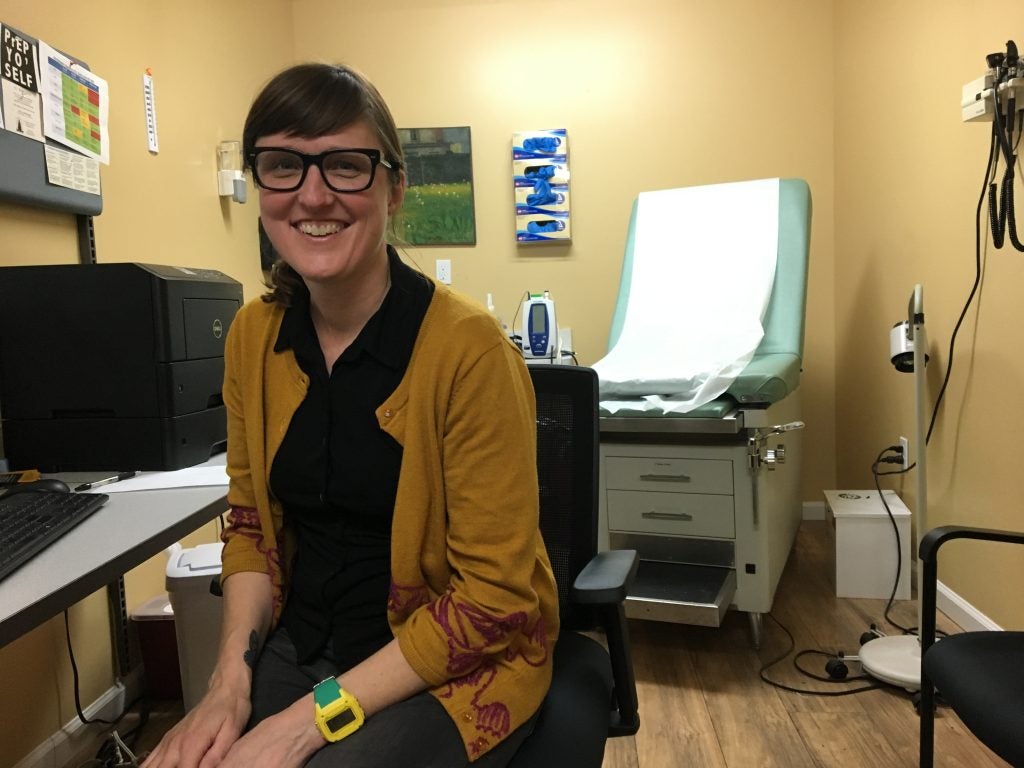
Bacteria and fungi can lead to serious infections when they get into the body, from the skin, down to the bone, through the blood, and into the heart. With all these risks, the best way to prevent wounds related to drug use is clear: Don’t inject. But Bamford, Dhand, and others at this clinic see lots of patients in the throes of addiction. So she often goes over safer ways to inject, to help reduce the infection risks.
“None of it is completely preventable, obviously, but we can do far better in making injection far safer and at least preventing a lot of these infections,” says Bamford.
Studies out of Vancouver suggest that offering patients tools and teaching safe injection practices decrease complications, says Bamford, but no solid randomized controlled studies exist to further prove this. The biggest thing that has been shown to reduce infections is cleaning the skin first, with an alcohol wipe, to get rid of the bacteria. Beyond that, she advises people to use boiled or sterile water when preparing drugs.
“If it’s tap water or even bottled water, that can be contaminated with bacteria and fungi,” Bamford says. “It’s not sterile.”
In other words, clean supplies are key. She advises patients to rotate injection spots, to give veins a chance to recover, and to point the needle toward the heart at an angle between 15 to 45 degrees.
Using clean needles can help prevent the spread of Hepatitis C and HIV. However, even if a person doesn’t share needles, using them more than once can increase the risk of skin and soft-tissue infections. That’s because even after one use, the tip of a needle becomes what’s called “barbed.” A person can’t see it with the naked eye, but it can cause lots more trauma to the area.
Still, even if a person takes all these precautions, the drug itself might be contaminated, so if and when bacteria does get in the body, the body fights back. It often forms an abscess, or a pocket filled with puss, to trap the bacteria.
The skin may become swollen and painful. If the infection is beyond the skin, a patient may develop a fever. Bamford often prescribes antibiotics. When that doesn’t help, though, a person may need more intense care.
The importance of trust
Sheila Dhand, the nurse, says tending to any of this first requires trust.
“I was surprised when I started doing this, the extent to which people will go through to hide their wounds,” says Dhand. “And they’re easy to hide.”
Dhand says a lot of people may be afraid or embarrassed to show an injection-site wound, especially one that’s just not healing. They can smell really bad and look pretty gruesome.
“Some people have had the experience of showing somebody their wounds and then reacting poorly,” Dhand says. “And that could be a nurse or medical provider who doesn’t have experience with wounds.”
Montro Pulley, the patient who came in to the clinic to have his wound checked, says the problem cuts deeper.
“When you’ve got people up there and talking to you so bad, you just say, ‘Forget everything. I’m leaving,’” Pulley says.
He says hospital staff have talked down to him.
“Why would anybody go anywhere to seek help?”
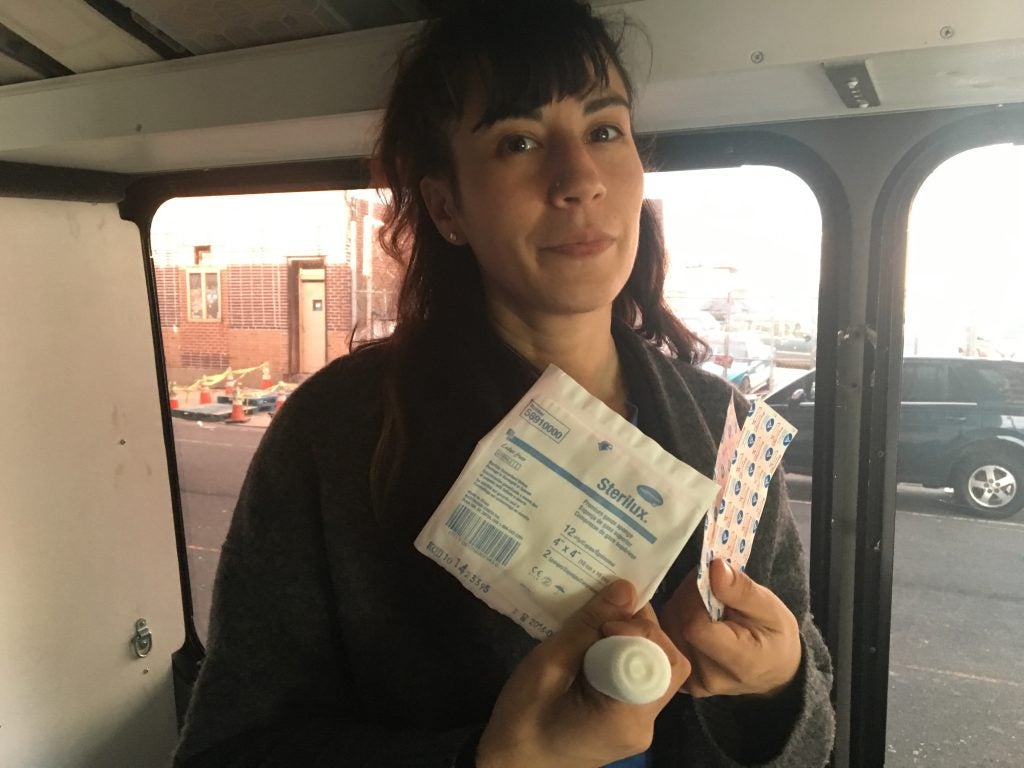
But he says there’s another reason people avoid the hospital. He says he’s not using anymore, but for people who are, being in the hospital for days or weeks may mean having to withdraw from drugs, which for many can feel like the flu on steroids, times 100.
“I’ve done that, left the hospital because I didn’t want to go through the withdrawals of not having no heroin,” he says, recalling past experiences.
These competing drug cravings and the stigma of drug use make for a really tough situation, for patients and for doctors, when it comes to wounds. Some hospitals around the country have started responding by treating the symptoms of withdrawal with special medications at the same time as caring for the wound.
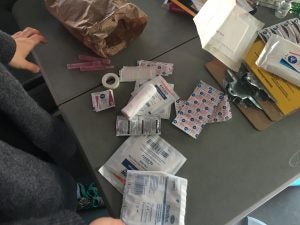
For people who won’t seek help, clinics like this one are trying something else: a mobile unit.
“We really find that there’s a whole lot of people who will not come into the building,” says Dhand.
She helps run one that’s parked outside of the clinic. Once a week, this big van travels to encampments of homeless people. And there’s a plan to expand the days and spots it visits. Inside, there’s an exam table, wound kits, and sterile water. Dhand will even give out sandwiches. Nourishment, she says, is important for wounds to heal.
“Somebody with a wound needs double the amount of protein, and the body uses double the amount of protein than somebody that doesn’t have a wound that needs healing,” she says. “So protein is really significant.”
Heart valve infections on the rise
A wound can become really dangerous really fast if bacteria spreads to the heart. It can lead to an infection called endocarditis. Alysse Wurcel, an infectious disease doctor at Tufts Medical Center in Boston, has been studying this.
“It’s a life-threatening condition. It often needs a valve replacement, which is a costly and very dangerous procedure at times,” Wurcel says. “Once people get the valve replacement, they’re often not receiving the addiction treatment they need following it.”
In her own practice, Wurcel started noticing more and more people coming in with really severe infections related to drug use. So, she starting mining through national billing data and found a concerning trend. Between 2000 and 2013, admission rates for endocarditis among people who use drugs went from 7 to 12 percent. And not just that, those admitted were younger. It reflects, she says, that a newer generation of people are injecting drugs.
“I think it was a big increase,” says Wurcel. “I think the interesting part, too, is that we ended in 2013. And now we’re in 2018, and everything from 2013 we know has just skyrocketed. It was only the beginning.”
Healing deeper wounds
Inside the clinic in Philadelphia, HIV physician Laura Bamford speaks in Spanish to the patient whose abscess she just treated.
“It’s a lot better, yes?”
She tells him she’s here every Wednesday. She takes appointments and walk-ins.
Bamford says these hard-to-treat wounds are a constant struggle, given all the factors surrounding drug use. But despite the uphill battles, there’s a special kind of satisfaction in treating them.
Dhand says doing so can also help begin to address the deeper wounds of addiction.
“And so we’ll talk about people’s life stories, but then we’ll also talk about: Have you overdosed in the past? Have you overdosed in the past? Do you have Narcan? Do you know how to use it?” she says. “I mean, you’re cleaning someone’s body, wrapping them up, and bandaging them up. It’s really caring.”
WHYY is your source for fact-based, in-depth journalism and information. As a nonprofit organization, we rely on financial support from readers like you. Please give today.





